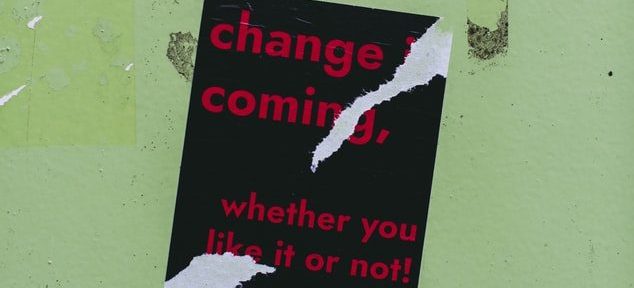
How to support behavior change across time and space

This article summarizes how Gluu’s process platform can enable behavior change in complex organizations. It can serve as a tool to 1) amplify the effect of change efforts and 2) create real-time transparency on daily progress towards a transformation.
Factors for successful behavior change
Top management’s active support and promotion of a change initiative are crucial for success. However, top managers can’t transform a company alone. 66% of business transformations fail because of a failure to engage the organization. This graph below highlights the importance of “soft factors” in successful change work:
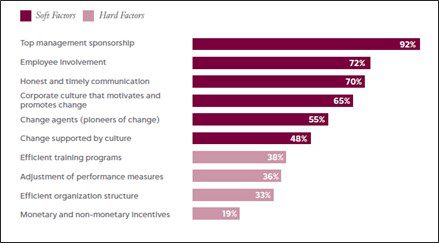
The success is about involving employees early and making it clear how each employee can participate and contribute. This is where top managers can leverage social media inside their companies and to reach employees across time and space.
In the following, I’ll discuss how Gluu can help you address eight barriers to change as identified by Keith Ferrazzi, a Los Angeles based writer and thinker on change management.
BARRIER 1
Failing to draw out the emotional need for change
Gluu’s platform allows companies to involve their employees early on, connect their roles, and work with the new initiative. This makes the roles within the organization clear. You are sending the signal “you are invited to participated as you are part of the change.” The result of this is that more employees can be involved more regularly.
Features that support this:
- The overview page highlights the processes that the person will work on and influence. This builds a bridge from strategy to process and execution.
- Role and responsibility. By publishing each person’s R&R it becomes clear what his/her mandate is.
The images below show a personalized overview of my tasks and instructions, as well as information about my role, which can be accessed under roles.
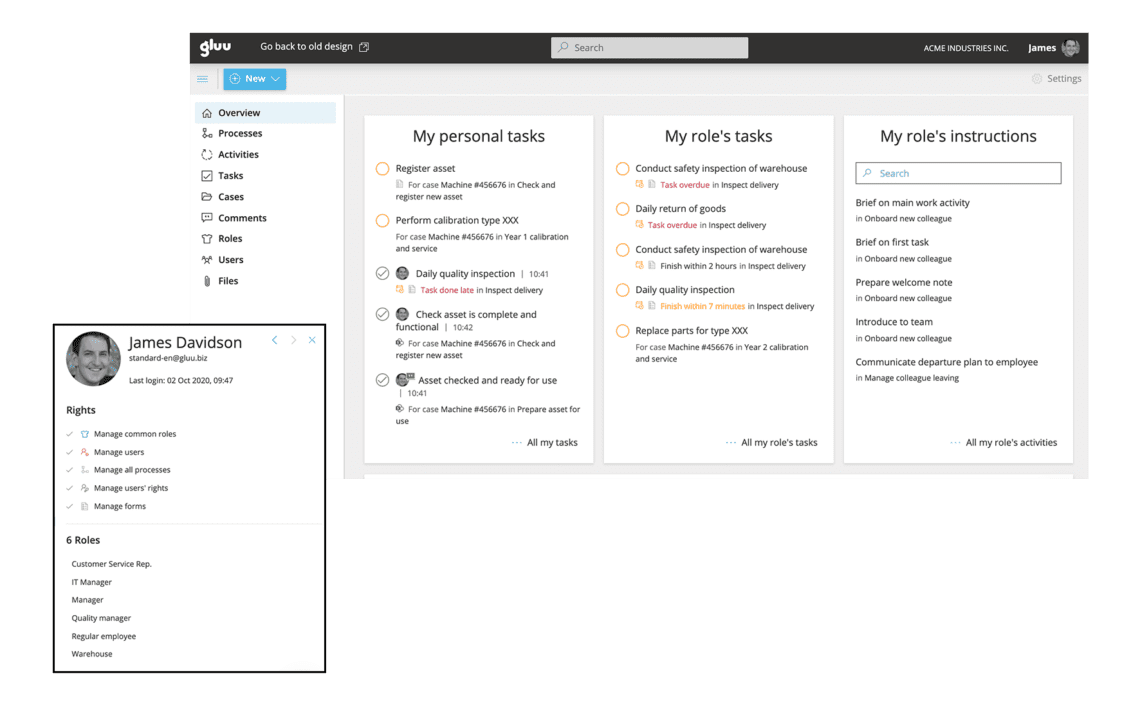
BARRIER 2
A map without behavior change to guide the journey
Change can also contribute to new questions such as “what should I do differently as a result of the change?” Since your employees’ daily processes and way of working are being shaped and transformed. This requires employees to serve as examples for their peers.
Gluu’s platform allows new behaviors to become visible through questions, answers, and discussions. These are all related to specific business processes that are part of the transformation. Let’s put this into practice. A new salesperson starts using new tools in their department. By using Gluu it will make their new behavior immediately visible to all sales employees within the department. This sends a signal that a peer is embracing the change. The result is that a viral organizational effect can start.
Features that support this:
- Label comments and shared tools that express signs of new behaviors. Users with sufficient rights can labels contributions such as “Good idea” or “Case of Excellence” to highlight positive contributions in real-time.
- Collect insights. Consultants and leaders can “crowd-source” the way that the transformation is happening (or not happening) in the organization and quickly plan follow-up training, coaching, or communications. This gives leaders the opportunity to respond in time.
The image below shows a comment inside of Gluu that is labeled ‘Best Practice’ and which received a simple emoji reaction.

BARRIER 3
A too broad challenge delivered by a remote leader
Middle managers and employees can develop and change business processes by themselves, if the leader provides a public challenge. These challenges need to be further supported by a virtual space where the organization can collaborate. It allows the participants to be concrete and action-oriented.
Features that support this are:
- Collaboratively design and change business processes.
Gluu’s visual process map and work instructions.
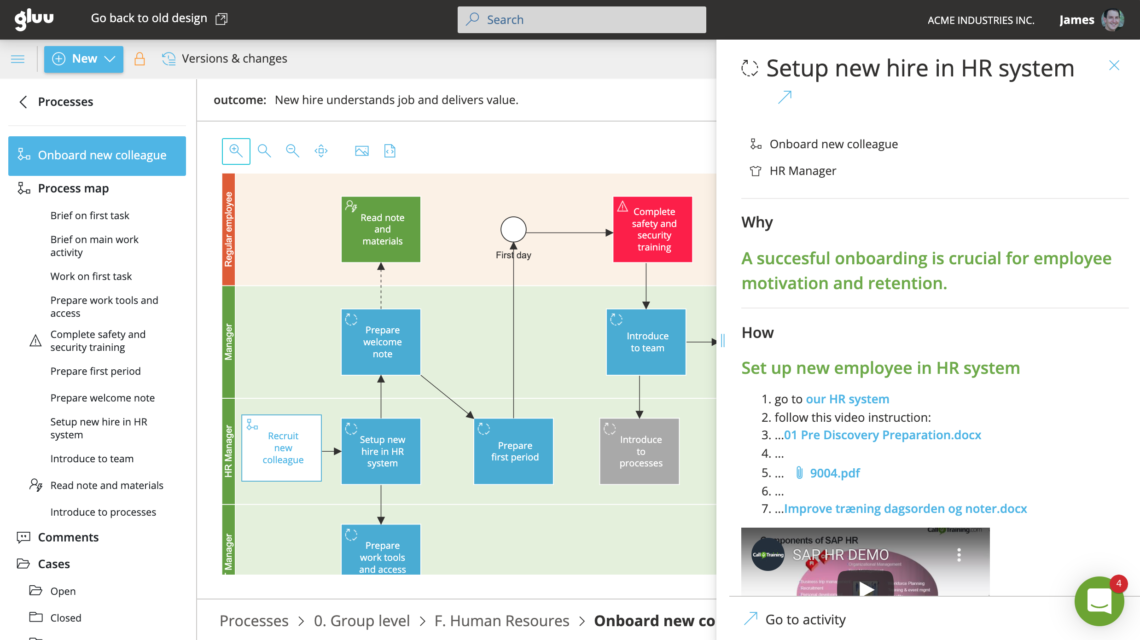
BARRIER 4
No collaborative coaching support structure
Many change programs are followed by roadshows, town hall meetings, and coaching sessions with middle managers. While this may add value, it is only economically feasible to organize a small number of such events. Gluu’s platform allows collaboration to happen through a single, virtual platform that supports existing collaboration tools, offline sessions and adds the ability to coach asynchronously by participating in discussions.
Supporting features:
- Base coaching sessions on actual insights that are “crowd-sourced” from polls and common viewpoints.
- Deliver coaching partly as participation in online discussions that happen across time and space.

Try Gluu for free
Sign up for a 30-day trial.
No credit card required.
BARRIER 5
Metrics that don’t evolve and badge the new behaviors
Most often metrics are not related to behaviors. By presenting KPIs concerning the processes, the metrics can drive discussions on how to change and improve.
Supporting features:
- Ask for feedback to each process and activity
- Filter comments by the label, date range, and agreement level to find common viewpoints and understand the sentiment in the organization.
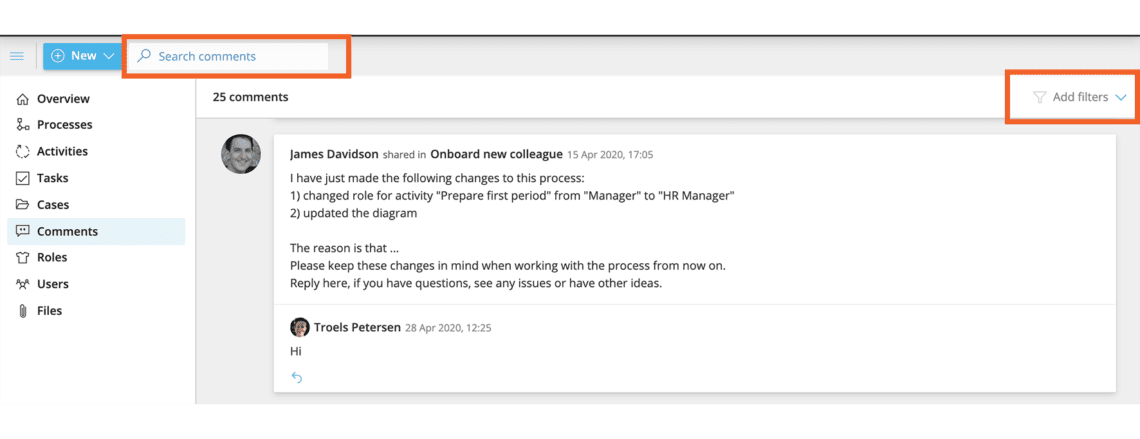
BARRIER 6
Failure to Celebrate and Communicate
Success stories must be shared quickly and effectively with all relevant people. In most cases, a communications consultant is employed. He or she then looks for success stories, captures them, and produces case studies or videos. By using Gluu’s platform you can drastically shorten the vital time span from capturing the first signs of an emerging success story to the time that it is understood by peers.
Example: A salesperson uses a new sales tool and makes a comment about the good results he/she achieved. Everyone who will follow the sub-process can see this immediately. The Sales Director sees the comment and labels it “Case of excellence” with one click. This new behavior is now captured, communicated, and endorsed in real-time.
BARRIER 7
Isolation and its Cousin – zero accountability
Fostering communities to develop around the different parts of the new initiative is important. Often peers are located in different offices and across time zones. Gluu helps by underpinning virtual communities around specific business processes and sub-processes. This allows people to connect with their peers down to a very granular level. E.g. people that work with large accounts in a specific vertical can connect across sales regions – and exchange ideas on specific parts of the account management process. This makes it easier to provide uniform sales messaging to international accounts.
Benefits include:
- Common vocabulary through day-to-day dialog across geography.
- Common context by having discussions at the right place in a business process.
- Common ways to apply how-to guides across the company.
Supporting features:
- Making cross-functional process teams visible for accountability.
- Foster dialog and sharing by all the roles that are involved in the process.

Try Gluu for free
Sign up for a 30-day trial.
No credit card required.
BARRIER 8
Leaving resisters in their seats; not defining new way aptitude
It can be very difficult to understand who is taking action and who is not. Which employees are embracing change and which are opposing it? By allowing everyone to participate in a common platform it will quickly become visible who is active and who may need follow-up.
Supporting features:
- Share comments from role members, so e.g. Service Reps see that others are working in new ways.
- Flag comments as Agree or Disagree to be able to address key concerns early.
Frequently Asked Questions
To foster behavior change in employees working in remote or virtual settings, organizations can implement specific techniques such as regular check-ins, providing opportunities for social interaction, setting clear expectations and goals, offering virtual training and coaching, and using technology tools for monitoring and feedback. Creating a supportive and inclusive virtual work culture is essential for promoting behavior change in remote employees.
Measuring the effectiveness of behavior change initiatives across different geographical locations and time zones can be done through key performance indicators (KPIs), surveys, feedback mechanisms, and tracking behavioral metrics. Organizations can use data analytics tools to analyze trends and patterns in employee behavior changes, assess the impact of initiatives, and make data-driven decisions for continuous improvement.
For supporting behavior change initiatives in a distributed work environment, organizations can leverage technology tools and platforms such as virtual collaboration software, project management tools, communication apps, employee engagement platforms, and learning management systems. These tools can facilitate communication, collaboration, training, feedback, performance tracking, and behavior reinforcement in a remote work setting. By utilizing technology effectively, organizations can enhance the success of behavior change initiatives in a distributed work environment.
About the Author









